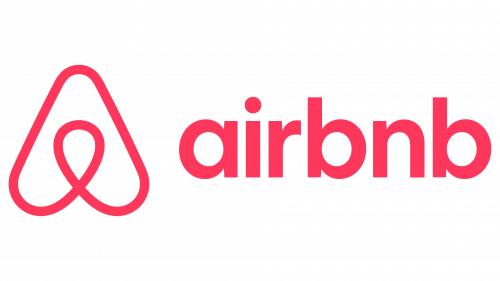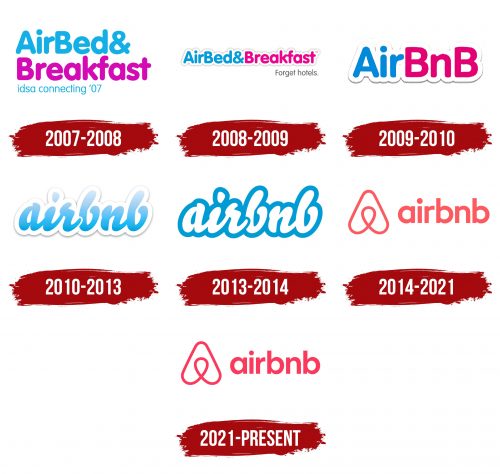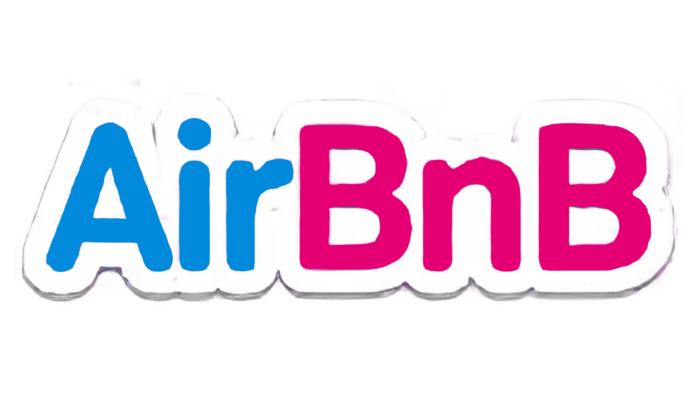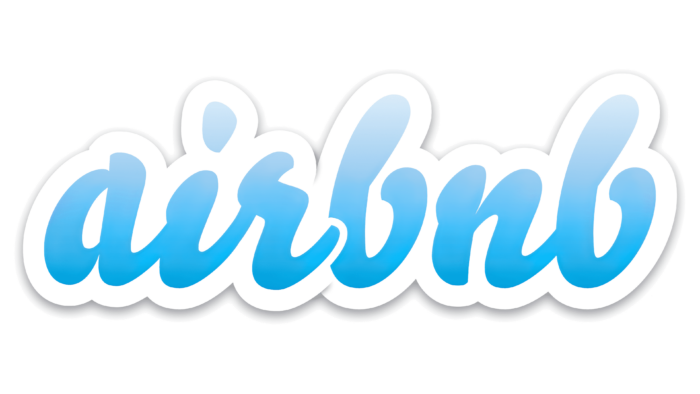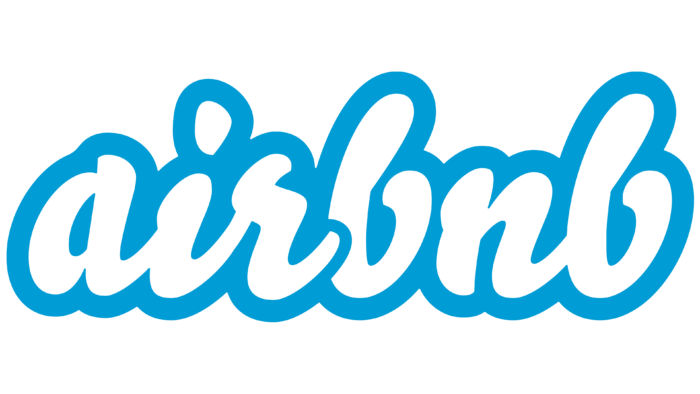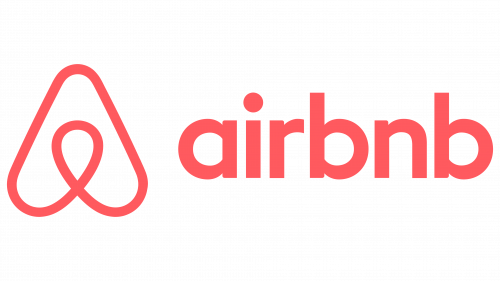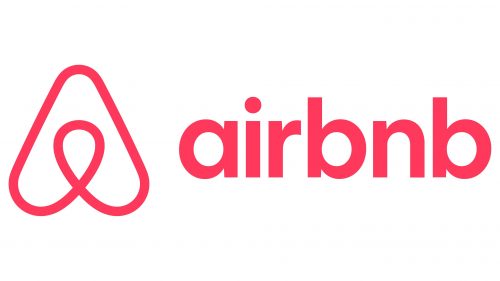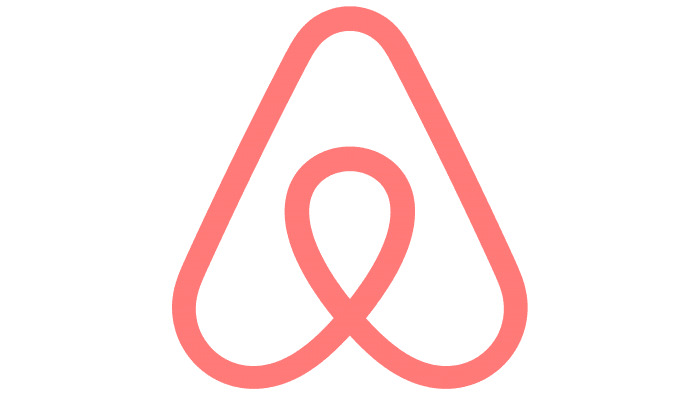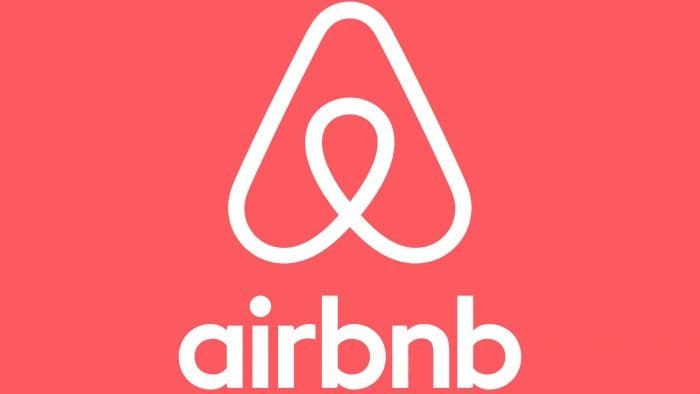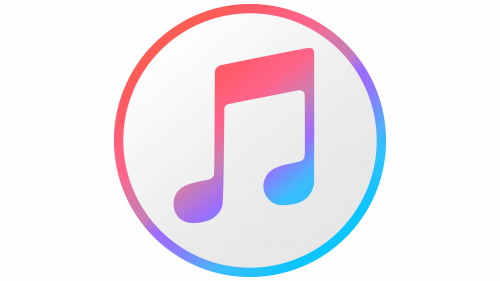The Airbnb logo promotes products related to accommodation and the search for housing worldwide. The emblem embodies the “Belong Together” symbol, which consists of four themes: people, places, love, and the company itself.
Airbnb: Brand overview
Airbnb is an online service that helps people find and rent short-term housing. The region of coverage is the entire world. Therefore, it helps travelers settle comfortably even in an unfamiliar village. The service was founded by Brian Chesky, Joe Gebbia, and Nathan Blecharczyk.
In 2007, Airbnb was born in San Francisco when two young designers, Brian Chesky and Joe Gebbia, faced financial difficulties paying their rent. With all the hotels in the city fully booked for a major design conference, they decided to rent out a portion of their apartment to attendees, offering air beds and breakfast.
Their idea proved successful, and they realized they had the potential to start a business. In February 2008, their former roommate, engineer Nathan Blecharczyk, joined them, and together, they launched AirBed & Breakfast, which was eventually shortened to Airbnb.
The website initially focused on providing accommodations for major events. The 2008 Democratic National Convention in Denver was the company’s first significant test, and they secured 80 willing hosts.
Despite early success, the business faced financial challenges. To raise funds, the founders created and sold limited-edition breakfast cereals featuring the 2008 presidential candidates, which attracted media attention and brought in around $30,000.
In 2009, the company received its first funding from Y Combinator, a well-known startup accelerator. This allowed for rapid growth and improvements to the website. That same year, they dropped the reference to air beds and breakfast and rebranded.
2010 was a pivotal year for the company. It launched its first mobile app and raised $7.2 million in funding. The company also expanded globally, opening the first European office in Hamburg.
By 2011, the platform had reached one million bookings. However, the company faced its first major crisis when guests vandalized a host’s home. In response, they introduced a host guarantee of up to $50,000, significantly boosting user confidence.
Expansion continued in 2012, with new offices in São Paulo, Barcelona, Paris, London, and Milan. That year, the “Instant Booking” feature was introduced, allowing guests to book accommodations without prior approval from the host.
In 2013, co-founder Nathan Blecharczyk became the first Chief Technology Officer, marking a new phase in technological development. That same year, the platform introduced a new logo, “Bélo,” symbolizing “belonging.”
In 2014, the company underwent a major redesign. It launched the “Belong Anywhere” marketing campaign, revamped its website and mobile app, and began partnering with host cities for major events, starting with the 2016 Rio de Janeiro Olympics.
2015, the company expanded its offerings to business travelers by launching a dedicated program. They also introduced Experiences, allowing locals to offer unique tours and activities to guests.
A significant milestone in 2016 was the introduction of Trips, which expanded services beyond accommodations to include restaurants, tours, and other local experiences. However, the company also began facing increasing pressure from city governments concerned about the impact of short-term rentals on housing markets.
2017, the platform entered the luxury market by acquiring Luxury Retreats, a high-end villa rental company. They also launched Airbnb Plus, a category of verified high-quality homes.
2018, a new version of Work was launched, focusing on corporate clients. The company also expanded Experiences to more cities worldwide.
In 2019, the company announced plans to go public in 2020. They also expanded into the traditional hotel market by acquiring HotelTonight, a platform for last-minute hotel bookings.
2020 presented significant challenges due to the global health crisis. Despite these challenges, the company successfully went public in December 2020, becoming one of the most anticipated IPOs of the year.
In 2021 and 2022, the company continued to adapt to the changing travel landscape. They introduced the Live Anywhere program, focusing on long-term rentals and remote work. They also enhanced features for hosts to manage bookings and pricing better.
By 2023, the platform had established itself as a leader in the travel and hospitality industry, continuing to innovate and adapt to the evolving needs of hosts and guests worldwide.
Meaning and History
When Airbnb first started, it was a small startup offering a place to stay with strangers. Over time, the company grew and became a global platform for booking accommodations worldwide. The logo needed to reflect this growth and the company’s new values. It is not just a service for renting housing; it is a community of people who trust each other and create unique travel experiences.
What is Airbnb?
Airbnb is an American corporation that provides housing for tourists in private homes. This unique type of accommodation led to a revolution in the tourism industry, as previously travelers only stayed in hotels or hostels. The company operates through its eponymous website, where users can book accommodation. The company was founded in 2008 by Joe Gebbia and Brian Chesky.
2007 – 2008
Once known as AirBed and Breakfast, this reflected the business concept of three friends from San Francisco who, in 2007, decided to rent out an inflatable mattress in the living room and coincidentally feed travelers breakfast. Thus, the name represented the full range of services. The short but meaningful phrase became the basis for a three-level logo. The first line was occupied by the blue word “AirBed&,” the second by the purple “Breakfast,” and the third by the blue phrase “idsa connecting ’07”. All were aligned to the left edge. The upper lines used a bold bubble font in the style of Comic Sans, while the lower ones used a thin, low-contrast sans serif font.
2008 – 2009
In 2008, the design of the wordmark changed. The designers placed the company name on one line and the long inscription on a white base with a light gray shadow, which spread as a gradient around the entire outline. This shadow replicated the outlines of the letters, making the logo resemble a sticker. Thanks to the brighter and more saturated colors, the phrase “AirBed & Breakfast” stood out against such a background. Below was the slogan “Forget about hotels” with a period at the end. It was right-aligned and consisted of dark gray sans-serif letters. The font roughly resembled Proxima Nova Condensed Medium by Mark Simonson Studio.
2009 – 2010
In 2009, the founders of AirBed and Breakfast underwent training at the Y Combinator venture fund and, as part of the collaboration, received funding for the company’s development. Some of the money went into rebranding, as the platform expanded its range of services that same year, changed its name to Airbnb, and updated its logo. Thus, a wordmark appeared with a shortened inscription, where only the letters “Air” remained from the first (blue) half and “BnB” from the second (hot pink). A common white contour still outlined them, but the designers reduced the blur of the gray shadow on the edge.
2010 – 2013
The creators of the new logo decided to unify its font and color, so the inscription became blue and was transformed into lowercase. The company name used a custom set of glyphs, mimicking handwritten text. The letters were characterized by thickening and smooth, rounded lines. Notably, the letter “r” was not connected to the following “b” but was separated from it by a thin white contour. The style of the Airbnb logo remained unchanged: it still resembled a sticker due to the blurred gray shadows that appeared at a distance from the word. At the same time, it acquired a linear gradient: the bright blue color at the top took on a pale shade.
2013 – 2014
The original version of the logo consisted of “inflated” letters as if filled with air. This was done intentionally, as such a design is associated with the soft, inflatable mattress mentioned in the name. The lowercase letters were outlined in blue and visually resembled handwritten inscriptions. The lines were wide and sweeping.
2014 – 2021
In 2014, the project updated its logo, modernized it, made it original, and filled it with meaningful symbols. In this version, two parts are equally used: graphical and textual. On the left is the icon, and on the right is the name. The style of the elements is simple, and the background is white.
2021 – today
The Airbnb logo, which has become a symbol of hospitality and openness, has undergone some changes but retained its recognizability and the key elements that were originally established.
The main element of the logo is an abstract symbol that combines several meanings. This shape, reminiscent of a drop, a heart, and an inverted letter “A,” remains unchanged. This symbol continues to represent the connection between people and the platform’s universality.
The font has also remained the same. It is still rendered in a soft, rounded style, which adds a sense of friendliness and accessibility. The smooth lines and absence of sharp angles emphasize the company’s desire to create a cozy and comfortable space for everyone.
The primary change involves the color. The rich pink shade has been slightly altered. Previously, the color was somewhat brighter; now, it has become slightly warmer and deeper. This subtle change is intended to give the emblem a modern look while maintaining its brightness and memorability.
Airbnb: Interesting Facts
Airbnb is a website that changed how people travel and find places to stay. It started with a simple idea but has grown into something big that reaches worldwide.
- Starting Small: In 2008, three friends in San Francisco, Brian Chesky, Joe Gebbia, and Nathan Blecharczyk, made money by letting people sleep on air mattresses in their apartments. They called it “AirBed & Breakfast.”
- First Big Moment: Their first bunch of guests came in 2007 during a big design conference when all the hotels in San Francisco were full.
- Growing Fast: The platform quickly expanded, and now, you can find places to stay in over 100,000 cities across more than 220 countries.
- So Many Choices: You can find many unique places to stay, like treehouses, castles, or even islands, not just regular rooms or apartments.
- Helping Economies: The service helps local economies because it lets people make money from their homes and spreads out where tourists spend their money, not just in hotel areas.
- More than Stays: In 2016, the company started offering “Experiences,” where locals can show travelers around, teach them things, or take them on adventures.
- Busy Times: Big events like the Olympics or World Cup attract many people who book accommodations through the platform, showing that it can handle many travelers.
- Dealing with Challenges: When COVID-19 hit, the company faced tough times with fewer people traveling. They devised new cleaning rules and focused on longer stays or being close to home.
- Becoming a Public Company: In December 2020, the business started selling shares to the public, marking a significant milestone and showing that people believe in its future.
- Helping Out: The platform has offered free accommodation for emergency workers during the pandemic and helped refugees find housing.
Font and Colors
The updated design was developed by DesignStudio from London (UK). This version represents a stylized letter “A,” consisting of four elements, each with a special meaning. Specifically, these are people, places, love, and Airbnb itself, uniting them. Together, they form a unique and simple figure, commonly called Belong Together.
The original Airbnb font is airy and italic, while the modern one is strict and classic. The letters on the emblem are streamlined, minimalist, sans-serif. The color palette remained the same to avoid cluttering the visual perception of the service. The debut version is based on a combination of white and light blue, the current one – with rich red.
